What Is Contingency Planning? Creating a Contingency Plan
Think about how many businesses were affected by supply chain issues during the pandemic. Most probably never predicted such a catastrophe, but the ones that had a plan in place for such an obstacle were better prepared. Even with the best intentions, your contingency plan may get off to a rocky start. A contingency plan exists to deal with unexpected adverse situations, which are often disasters that disrupt your ability to run your business. These are recovery strategies that help the business ensure that it will recover quickly and efficiently after a disruption occurs.
You’ve created a contingency plan—now what?
Contingency planning takes many shapes as it’s used for helping businesses and projects across industries. Even governments use contingency plans to prepare for disaster recovery or economic disruption, such as those caused by natural disasters. Begin by making a thorough identification of potential risks that could realistically occur.
Crisis Management Quotes Every PR Team Should Live By
Every business process is vulnerable to some sort of emergency or human error and requires a solid risk management process. Once the process list is created, consider what might disrupt business continuity. Having a contingency plan in place enables you to respond to the unforeseen more effectively, adapt to changing conditions, and recover from setbacks more efficiently. While crisis management deals with imminent threats and the emergency response plans needed during an actual crisis. An example of this could be the Department of Justice’s post-disaster recovery plan. From simple task management and project planning to complex resource and portfolio management, Smartsheet helps you how to flush alcohol out of your system for urine test improve collaboration and increase work velocity — empowering you to get more done.
For example, maybe you plan to do quarterly reviews and training so new hires, and existing employees, are all on the same page. As with all plans, it’s essential to continuously test (more on that in the next section) and update them over time. As businesses scale and change, your business needs will likely change, and specific scenarios will no longer have as significant of an impact. There may also be new scenarios to plan for that you hadn’t anticipated or thought of when you were a smaller operation. During this phase, identify all critical areas essential to keeping your business up and running every day. As these operations are imperative to success, you need to have plans to ensure that these operations continue, regardless of whatever scenarios arise.
- Learn more about the important elements of a contingency plan in this helpful guide to contingency planning.
- The contingency approach is a management theory that suggests there’s no single best way to manage an organization.
- Enterprises are often defined by how they deal with events that are out of their control.
- Our contingency plan template has everything you need to start the planning process.
- On the other hand, a contingency plan is about developing risk management strategies to take when an actual issue occurs, similar to a risk response plan.
Elements of a Project Management Contingency Plan
Think of it like checking the weather before going sailing so you don’t accidentally get caught in a storm. Nine times out of ten, a clear sunny day won’t suddenly turn stormy, but it’s always better to be prepared. Creating a contingency plan can help you ensure that, if a negative event does occur, your company will be ready to face it and bounce back as harbor house sober living quickly as possible. As part of that contingency plan, describe the risk and brainstorm what your team will do if the risk comes to pass.
In project management, contingency planning is often part of risk management. Sometimes, unexpected changes and risks cause projects to extend beyond those lines. The more a manager can prepare for those risks, the more effective his project will be.
This is extra time built into a project schedule to account for project risks. Project experts usually refer to project contingency as the resources set aside as part of contingency planning. These are extra financial or staff resources or extra project time that your team might need to use if a risk happens. In addition, you can find a downloadable project contingency plan template to help get you started. Once you’ve created the plan, make sure you store it in a central location that everyone can access, like a work management platform. If it does come time to use one of your contingency plans, storing them in a centrally accessible location can help your team quickly turn plans into action.
A contingency plan should john joseph kelly and amy carter be looked at as a living document and updated as needed. Your business needs will change over time and so will its obstacles and risks. Get their feedback on potential risks and other factors that may impact guidelines in the plan. Having executive support from the start ensures the plan put forth is approved and also can motivate those at the department level to buy-in as well.
Our dashboard gives you a bird’s eye view of all of the critical project metrics. It displays live data so you’re getting a real-time look at how your project is progressing. This live information can help you spot issues and resolve them to make sure that your contingency plan is a success. A contingency plan helps you prepare for worst-case scenarios and keep your project afloat, should anything go wrong. For example, running simulations for your drought contingency plan or pandemic contingency plan enables you to reassess and refine your recovery strategies. This preparation is essential to keep normal operations intact and provide critical services like medical services and operational HR services without interruption.
Each plan should include all of the steps you need to take to return to business as usual. Once you’ve assigned severity and likelihood to each risk, it’s up to you and your stakeholders to decide which risks are most important to address. Contingency plans are helpful for all types of organizations, from businesses to non-profits, to government organizations. While these scenarios may never come to fruition, it’s important to have a plan in place so that your team isn’t panicking or scrambling to deal with an unfavorable event at the last minute. Simply put, a contingency plan is an action plan designed to help organizations respond to a potential future incident.

